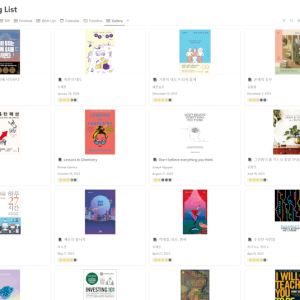What to Expect on JLPT Exam Day: My Experience & Helpful Tips
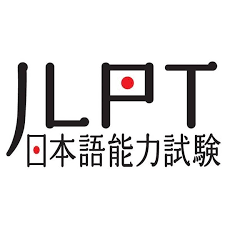
On December 1st, I took the JLPT N1, marking a significant milestone in my Japanese language learning journey. It was both challenging and enlightening, and I’m excited to share my experiences with you. In this post, I’ll discuss what to expect from the JLPT N1 based on my personal experience, along with practical tips to help you prepare effectively and approach test day with confidence.
My passion for the Japanese language and culture inspired me to take on the challenge of the JLPT N1. Earlier this year, I detailed my motivations in a previous post. Throughout my journey, I’ve been documenting my experiences and strategies on my JLPT journey page, and I plan to continue sharing insights into my study methods, timelines, and resources.
How I Prepared for the JLPT N1 Exam
Preparation Journey
I began preparing for the JLPT N1 in April 2023, starting at the N4 level since I was familiar with basic vocabulary. Recognizing that Kanji was a weakness, I dedicated substantial time to improving in this area. My study routine was structured and consistent, gradually intensifying as the exam date approached.
In November 2024, the final month before the exam, I focused on reviewing vocabulary and grammar extensively. I started taking practice exams to simulate the real test environment and improve my time management skills. Setting timers during practice sessions was crucial in helping me adjust to the pacing required for the actual exam.
I took 7 practice exams, and my scores ranged from 126 to 146. My average scores in each section were:
- Vocabulary & Grammar: 41
- Reading: 44
- Listening: 48
I was pleasantly surprised by my listening scores. Initially, listening was one of my weaker areas, but it became a strength thanks to the strategies I outlined in my post on improving JLPT listening skills.
Embracing the Challenge
As the exam date approached, I felt a mix of nerves and excitement. I knew that unexpected challenges could arise, so I tried to prepare for various scenarios. Practicing with different study materials and simulating test conditions helped build my confidence.
Exam Day Insights: What to Expect
Arrival and Setup
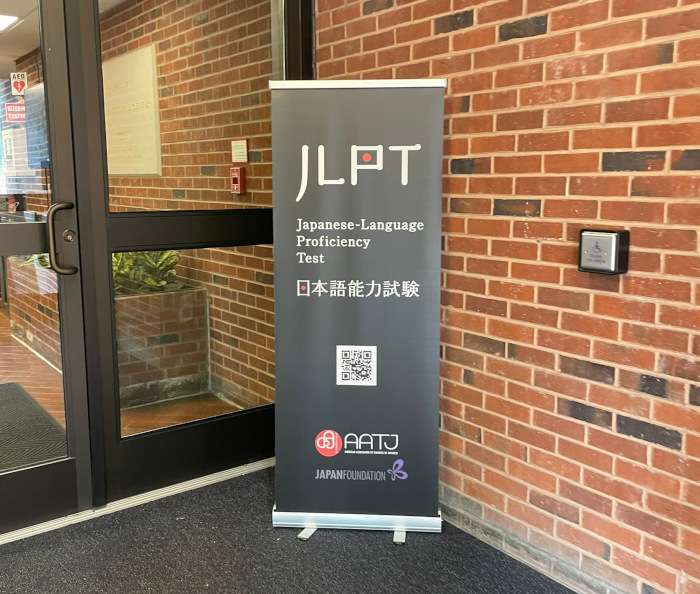
On the day of the exam, I arrived at the test site an hour early, which turned out to be a good decision. It took me about 15 minutes to find the correct building and room. The campus was bustling with other examinees, many of whom were reviewing their notes.
The exam room was small and crowded. We had to sit close to each other, and the desks were tiny—barely enough space for the test booklet and answer sheet. I had to hold my extra pencils in my hand during the test because there was nowhere else to put them. Despite the cramped conditions, I focused on the task ahead.
Test Environment Challenges
One unexpected issue was the lack of proper audio equipment. The proctors brought in an old CD player for the listening section, which worried me. The sound quality was poor—muffled and unclear—which made the listening section more difficult than I anticipated.
Additionally, the only clock in the room was at the back, so keeping track of time was challenging without turning around. I’m glad I brought an analog watch, as digital watches were not allowed.
Tips for the JLPT N1 Exam
Based on my experience, here are some practical tips to help you prepare for the JLPT N1 exam:
Before the Exam
Arrive Early
Aim to get to the test site at least an hour before the scheduled start time. This extra time allows you to navigate the venue without stress. Large campuses or unfamiliar locations can be confusing, so arriving early helps you find your room and get settled. It also gives you a chance to mentally prepare and review any last-minute notes.
Bring an Analog Watch
Since digital watches aren’t allowed, an analog watch is essential for keeping track of time during the exam. Relying on a wall clock can be risky if it’s not easily visible or accurate. Having your own watch ensures you can pace yourself effectively for each section, helping you allocate time to questions appropriately.
Pack Snacks and Water
With only a 10~20-minute break between sections and potentially long restroom lines, having quick snacks and water can help maintain your energy levels. Choose snacks that are easy to eat and won’t cause a mess, like energy bars or nuts. Staying hydrated and nourished can improve your concentration and reduce fatigue during the exam.
Prepare Extra Supplies
Bring multiple pencils (sharpened) and erasers. If you drop something during the exam, it’s easier and less disruptive to use a spare than to retrieve it, especially in cramped seating arrangements. Consider bringing a small pencil sharpener and extra eraser caps as well. Being well-prepared with supplies can prevent unnecessary stress.
Medication for Comfort
If you’re prone to headaches, migraines, or other discomforts, consider bringing over-the-counter medication like Tylenol. Exam environments can be stuffy or trigger anxiety, so having medication on hand can be a relief if you start feeling unwell. Remember to check the exam regulations to ensure that bringing medication is permitted.
During the Exam
Section Strategy
Start with the section you feel most confident in. I began with the reading section to make the most of my concentration while I was fresh. Tackling your strongest section first can build confidence and momentum. It also ensures you allocate sufficient time to sections that may require more focus, helping you manage your overall exam time effectively.
Stay Calm Amid Challenges
Unexpected issues can arise, such as poor audio quality or an uncomfortable environment. If something goes wrong, take a deep breath and focus on what you can control. Remember that all test-takers are in the same situation. Keeping a calm mindset will help you think clearly and perform your best despite any obstacles.
Time Management
Keep an eye on your watch to allocate time appropriately across sections. Set mini-deadlines for yourself within each section to ensure you’re progressing at a steady pace. If you find yourself stuck on a difficult question, make an educated guess and move on to save time for other questions you might answer more easily.
Use Breaks Wisely
Use the short breaks to recharge both mentally and physically. Have a quick snack, hydrate, or stretch your legs if possible. If the restrooms are crowded, decide whether it’s better to wait or use the time to relax at your seat. These brief moments can help reset your focus and reduce stress before the next section begins.
My Personal Experience
Language Knowledge and Reading Sections
The exam began after the proctors reviewed the rules and distributed the materials. We had 110 minutes to complete the language knowledge and reading sections. I started with the reading section to capitalize on my fresh focus.
The reading passages were moderately challenging but manageable. They were similar in difficulty to the practice exams I had taken. There were a few tricky questions that required extra thought, but overall, I felt prepared.
The vocabulary section was more difficult than I expected. There were some words I hadn’t encountered during my studies. I relied on context clues and made educated guesses. The grammar section was of medium difficulty, with a few questions that I double-checked.
As I worked through these sections, I began to develop a headache, possibly due to the stuffy room and nerves. With about 15 minutes left, I decided to rest instead of revisiting difficult questions, hoping to conserve energy for the listening section.
Listening Section
I was initially confident about the listening section, but that changed when the audio started playing. The poor sound quality of the CD player made it difficult to understand the dialogues. The audio was loud but not clear, almost as if it was being played underwater.
Despite these challenges, I tried my best to focus and pick up as much as I could. The pacing was slower than in practice exams, which helped a bit. However, I left the listening section feeling uncertain about my performance.
After the Exam
Upon finishing the exam, I felt a mix of relief and uncertainty. I was glad it was over, but I was concerned about how the listening section went. Regardless of the outcome, I appreciated the experience and the opportunity to assess my skills under real exam conditions.
I realized that there are always factors beyond our control, and it’s important to stay adaptable. If I decide to retake the exam, I’ll consider ways to prepare for potential environmental challenges, such as practicing with poor-quality audio.
Taking the JLPT N1 exam was a valuable experience that taught me a lot about preparation and resilience. For anyone planning to take the JLPT N1, I hope my experiences provide useful insights into what to expect and how to prepare effectively.
Remember to prepare thoroughly, but also be ready for the unexpected. Focus on your weaknesses, simulate real test conditions as much as possible, and don’t underestimate the impact of external factors on exam day.
I’m planning to continue documenting my journey on my JLPT journey page, including a detailed timeline of my study process. My goal is to support fellow learners as we all work toward mastering the Japanese language.
Explore More in Creative Endeavors
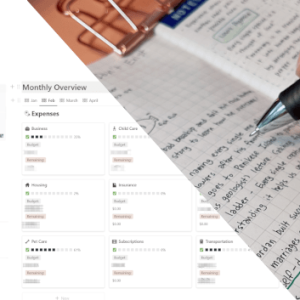
Analogue vs. Digital Journaling: Which One Suits Your Needs?

Hobonichi Weeks 2025: Why I’m Skipping It, Pros, and Cons
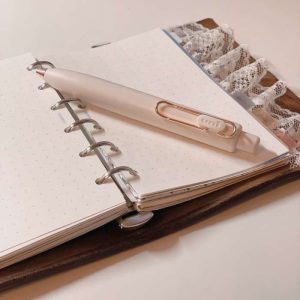
Uni-ball One P Review + Uni-ball One Fica Color Set

Why I Started Studying JLPT: My Journey to Learning Japanese

Finishing My Granny Square Cardigan: The Final Touches
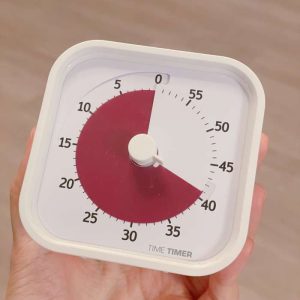
Pomodoro Timer: Techniques to Boost Productivity
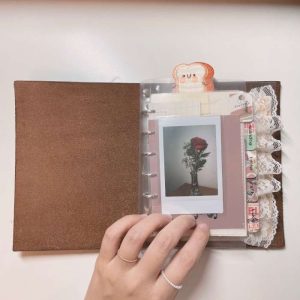
DIY A7 Binder Tutorial: Traveler's Notebook-Inspired (10 Steps)!
